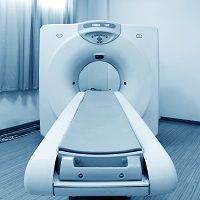Article
CT Analysis Shows Comorbidities of Psoriasis Include Gallstones, Fatty Liver, Urolithiasis
Author(s):
Recent research from Japan indicates that there are several comorbidities identified for patients with psoriasis, raising awareness of incidental findings in CT analysis.

For individuals with psoriasis, computed tomography (CT) analysis reveals that the skin disorder is a risk factor for developing fatty liver, urolithiasis, and gallstones, according to recent findings.1
These findings were sought out given that psoriasis was already associated with metabolic syndrome and even cardiovascular disease and other kinds of comorbidities. These kinds of conditions may be incidentally found in CT imaging but they have not been well-studied in relation to psoriasis.
This research into incidental findings from CT analysis, consequently, was authored by Koji Kamiya, MD, PhD, from the Department of Dermatology at the Jichi Medical University in Japan.
“Although psoriasis is associated with metabolic syndrome and cardiovascular diseases, other comorbidities, which can be observed as incidental findings on imaging, have not been well-studied,” Kamiya and colleagues wrote. “This study aimed to analyze the common incidental findings on CT in patients with moderate-to-severe psoriasis who received biologics at our hospital.”
Background and Findings
The Japanese Society for Psoriasis Research has been conducting yearly epidemiological surveys of individuals with psoriasis. For those treated with biologics, CT analysis is viewed as necessary to ensure there are no comorbid infections or malignancies during or following treatment.2
In this new study, investigators enrolled patients with psoriasis who had received biologics at Jichi Medical University between January of 2020, and February of 2021. Additionally, it was noted that data for their study was gathered retrospectively through the use of electronic medical records.
Healthy controls were recruited from living-kidney transplant donors who had undergone donor nephrectomy between January of 2006, and December of 2021. To collect relevant information, a survey was made to gather data on patient comorbidities, characteristics, and incidental findings from cervical, abdominal, chest, and pelvic CT scans.
The research team compared the frequency of incidental findings between psoriasis patients receiving biologics and living-kidney transplant donors. The chi-square test was utilized for this comparison.
The team’s primary endpoint was the prevalence of urolithiasis, fatty liver, and gallstones. Multivariate logistic regression was also employed by the research team to examine the effect of psoriasis while adjusting for factors like body mass index (BMI), age, hypertension, sex, type 2 diabetes mellitus, and dyslipidemia.
The investigators’ statistical analyses were conducted through the use of SPSS version 26.0, with the significance level being P < 0.05.
The team ended up examining the incidental findings on CT scans of 227 total patients with psoriasis who were on biologic therapy and 219 living-kidney transplant donors. Incidental findings were observed in 77.5% of the psoriasis group, with the most common being pulmonary lesions, fatty liver, urolithiasis, gallstones or post-operative gallstones, renal cysts, liver cysts, and colonic diverticulum.
The prevalence of fatty liver, gallstones, urolithiasis, and post-operative gallstones was noted as being substantially higher in those with psoriasis. Thus, psoriasis was identified as a risk factor for fatty liver disease, urolithiasis, and gallstones.
“Patients with moderate-to-severe psoriasis who received biologics were enrolled in this study, while those with mild psoriasis were not,” they wrote. “Nevertheless, we believe that the results of this study will lead to increased awareness of incidental findings on CT as common comorbidities of psoriasis.”
References
- Sugihara N, Kamiya K, Kado S, Kishimoto M, Kuwahara A, Sugai J, et al. Single-center survey of incidental imaging findings on computed tomography in patients with psoriasis on biologic therapy. J Dermatol. 2023;00:1–7. https://doi.org/10.1111/1346-8138.16843.
- Saeki H, Terui T, Morita A, Sano S, Imafuku S, Asahina A, et al.
Version. J Dermatol. 2019;2020:201–22.




